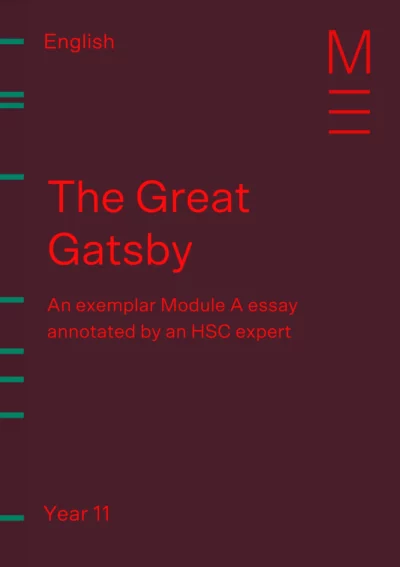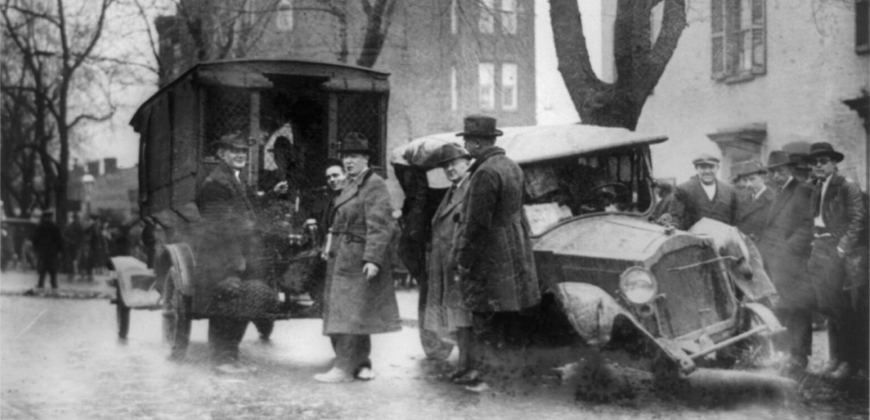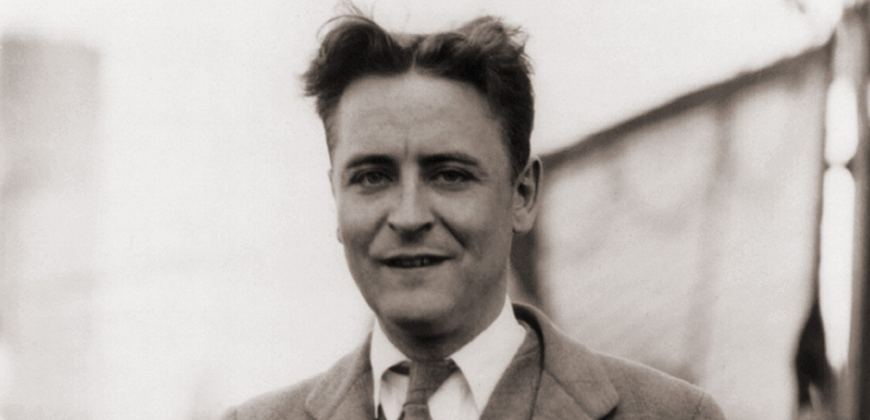Welcome to Matrix Education
To ensure we are showing you the most relevant content, please select your location below.
Select a year to see courses
Learn online or on-campus during the term or school holidays
Learn online or on-campus during the term or school holidays
Learn online or on-campus during the term or school holidays
Learn online or on-campus during the term or school holidays
Learn online or on-campus during the term or school holidays
Learn online or on-campus during the term or school holidays
Learn online or on-campus during the term or school holidays
Get HSC Trial exam ready in just a week
Get HSC exam ready in just a week
Select a year to see available courses
Science guides to help you get ahead
Science guides to help you get ahead
In this article, we go through the plots, themes and key contextual points in The Great Gatsby.

Join 75,893 students who already have a head start.
"*" indicates required fields
You might also like
Related courses

Join 8000+ students each term who already have a head start on their school academic journey.
Do you find The Great Gatsby challenging? Are you trying to understand Fitzgerald’s stylistic and textual choices? This is your ultimate cheatsheet for The Great Gatsby! Enjoy our plot summary, discussion of the main themes and analysis of some key contextual points.
In Year 11, there are no set texts for study, so schools can choose to study The Great Gatsby (1925) under any of the three modules: Common Module, Module A and Module B. This means you need to be aware of the syllabus rubric and consider The Great Gatsby with respect to the module you are studying.
An exemplar Module A Essay annotated by HSC expert. Fill out your details below to get this resource emailed to you. "*" indicates required fields
Get your FREE The Great Gatsby Annotated Essay!

Get your FREE The Great Gatsby Annotated Essay!
As the title suggests, this module is about analysing texts to learn writing skills and techniques from accomplished writers. From this, you should be able to use a greater range of language forms and features in your writing, and reflect on how you were inspired by other texts to make specific writing choices. You will study several different texts of different text types. This exposure to different forms and genres will help you develop an understanding of how composers try and convey meaning.
Need more explanation? We break down all the Common Module syllabus dot points in our Year 11 English Advanced Common Module Guide.
Module A: Narratives that Shape Our World is a contextual study. A contextual study asks you to look at a text’s context in detail as part of your study of the text.
Context, for our purposes, is the circumstances of the historical period and conditions during which a text was composed and its composer lived. When studying Narratives that Shape Our World, you need to think about the conditions that influenced the composer when they composed the text and how their text reflects the context.
The other focus of Module A: Narratives that shape Our World is the importance of narratives and storytelling to human society. Storytelling and narratives are important aspects of how humans view themselves as individuals, cultures, and nations. This Module asks you to interrogate how the importance of storytelling is reflected in the texts that they study.
Are you still confused? We break down all the Module A syllabus dot points in our Year 11 English Advanced Module A Guide.
Module B requires you to be a literary critic.
Essentially, you’re a literary critic assessing whether the text’s reputation is deserved. You need to ask, does it live up to the hype? Is it still relevant to us today?
We break down all the syllabus dot points in our Year 11 English Advanced Module B Guide.
Now that you know what the modules are all about, let’s take a look at The Great Gatsby and see how it fits in.
Nick Carraway, a young man from Minnesota, narrates his recount of the summer of 1922 when he moved to New York to learn about the bond business. Nick rents a house in the fictional district of West Egg, which is mostly inhabited by individuals who have recently become wealthy. The district of East Egg, located across the water from West Egg, is contrastingly filled with upper-class people like Nick, who have well-established social connections.
Not long after moving to West Egg, Nick visits his cousin, Daisy Buchanan, and her very wealthy husband, Tom, in East Egg for dinner. Nick learns from Daisy’s friend, Jordan Baker who is also a famous golf champion, that Tom has a mistress in New York. Nick later becomes romantically involved with Jordan, but he splits up with her near the end of the novel.
Back in West Egg, Nick continues to find his next-door neighbour, Jay Gatsby, very enigmatic. Gatsby lives in a large mansion and holds lavish parties every Saturday night. Nick eventually finds out that Gatsby has been throwing these parties to attract the attention of Daisy, who he has been in love with for almost five years after meeting her while he was serving in the military. Gatsby asks Nick to set up a meeting between Daisy and himself, so that they can reconcile.
Nick agrees to do so, and Gatsby and Daisy fall in love again. They are happy in their extramarital affair for some time, until Tom becomes suspicious of their association and Gatsby pressures Daisy to tell Tom that she never loved him and start a new life with Gatsby.
Soon Nick, Gatsby and Jordan are all invited to the Buchanans’ house for lunch, and en route to town, Tom confronts Gatsby about his relationship with Daisy. While Daisy tries to diffuse the situation, Gatsby argues that he and Daisy have always been in love and Tom accuses Gatsby of earning him money by illegally bootlegging alcohol. Gatsby denies these claims, but ultimately Daisy seems to have lost trust in him.
Recognising this, Tom insists that Daisy and Gatsby should leave together, and on the way, they accidentally hit and kill Myrtle who runs in front of their car because she thought that it was Tom driving. Shocked and unsure what to do, Daisy drives past the scene and returns with Gatsby to her East Egg home. Following after the pair, Tom is horrified to discover Myrtle’s dead body and later tells her husband, George Wilson, that Gatsby was the one who killed his wife.
The next morning Nick visits Gatsby who reveals that he actually came from a farming family and had met Daisy while serving in the army, but was too poor to marry her then. He confirms Tom’s accusations and admits he earned his wealth by bootlegging.

While Nick urges Gatsby to leave in case his car will be traced to him for the hit-and-run, Gatsby refuses to leave as he hopes that Daisy will call him. Daisy never calls and Myrtle’s enraged husband shoots Gatsby, who was waiting for Daisy’s call in his pool, then proceeds to shoot himself.
Nick holds a funeral for Gatsby, but only two people attend and this does not include any guests from his extravagant parties. Tom and Daisy leave East Egg, and Nick moves back to the Midwest.
Learn with our HSC experts to level-up your analysis. Learn more about the Matrix English Courses now.
Produce insightful analysis & Band 6 essays!
Expert teachers. Band 6 resources. Proven results. Boost your English marks with our On Campus course.
Francis Scott Key Fitzgerald was alive between 1896 and 1940. In order to make sense of his novel, it’s important to think about how the time he lived in was different from today.
Fitzgerald was born in Minnesota and raised in an upper middle-class family in New York. He attended Princeton University, but dropped out to serve in the army. During his service, he met and fell in love with socialite Zelda Sayre. Despite initially rejecting Fitzgerald because he was not rich enough, Zelda eventually agreed to marry Fitzgerald after he became financially successful with the commercial success of This Side of Paradise (1920).
The Great Gatsby is inspired by much of his own life; Gatsby also falls in love while on military service, but is unable to marry Daisy at the time because he does not have enough money. Nick is also educated at an Ivy League school and moves to New York after the war.

The novel is set in New York City during the ‘Roaring Twenties’ when many new technologies were becoming popularised and unprecedented levels of material wealth served to compensate for the horrors of WWI. Fitzgerald famously dubbed this era in America as ‘The Jazz Age’ and strongly captures the materialistic fixations that undermine the characters’ integrity and pursuit of genuine happiness.
In another essay, Fitzgerald even claims that the era had “a whole race going hedonistic, deciding on pleasure.”
During the 1920s, the suffragette movement resulted in some progress for women, as they were given the right to vote and were beginning to be accepted into the workforce. However, there still remained rigid social expectations for women to act docile and obey males.
Jordan especially subverts this period’s gender norms as an independent, unmarried and childless woman. As a result, she faces criticism from Tom who says “they oughtn’t to let her run around the country this way”, which highlights the sexist social expectations of the time.
Daisy even hopes her daughter will be a “beautiful little fool”, revealing how she feels a woman’s intelligence and critical awareness only makes it more difficult and upsetting for her to navigate such a society. It’s also interesting to note that Daisy’s dialogue was inspired by something that Fitzgerald’s wife said after she gave birth to their daughter.
Now that we know a bit about Fitzgerald’s context, it’s time to consider the major themes which his novel explores.
There are three main class backgrounds that the novel focuses on:
Class and wealth underscore almost all the events in the novel:
Nick eloquently explains Tom and Daisy’s class privilege in this metaphor:
they smashed up things and creatures and then retreated back into their money or their vast carelessness or whatever it was that kept them together, and let other people clean up the mess they had made…

The American Dream was a particularly prominent set of ideals during Fitzgerald’s time. It promotes that all individuals in the United States, regardless of who they are or what they were born into, can become successful and move up social classes with hard work.
Fitzgerald captures the American Dream in Nick’s hopeful dialogue:
‘Anything can happen now that we’ve slid over this bridge,’ I thought; ‘anything at all….’
Gatsby chases this dream in an attempt to win over Daisy. He ends up becoming wealthy, but ironically this leaves him unhappy and ultimately he chooses to sacrifice himself for Daisy, who carelessly returns to Tom.
In a way, the characters’ materialistic and selfish desires undermine any love in this novel. The marriages are formed to conform to class expectations and Gatsby’s love for Daisy is idealistic and almost dismissive of her true character. Daisy is more like a dream and an object of desire to Gatsby, rather than a human being who he wants to get to know:
He hadn’t once ceased looking at Daisy and I think he revalued everything in his house according to the measure of response it drew from her well-loved eyes.
Fitzgerald suggests that Daisy’s material wealth and possession cannot compensate her sadness in her loveless marriage in Nick’s description of her:
Her face was sad and lovely with bright things in it
Written by Matrix English Team
The Matrix English Team are tutors and teachers with a passion for English and a dedication to seeing Matrix Students achieving their academic goals.© Matrix Education and www.matrix.edu.au, 2025. Unauthorised use and/or duplication of this material without express and written permission from this site’s author and/or owner is strictly prohibited. Excerpts and links may be used, provided that full and clear credit is given to Matrix Education and www.matrix.edu.au with appropriate and specific direction to the original content.